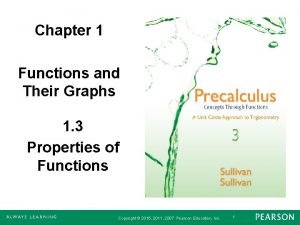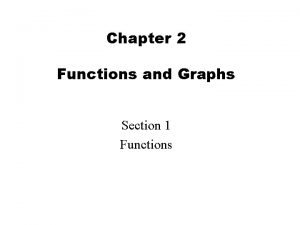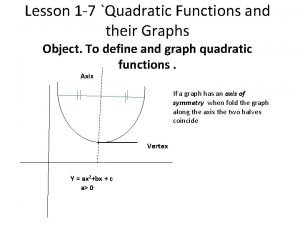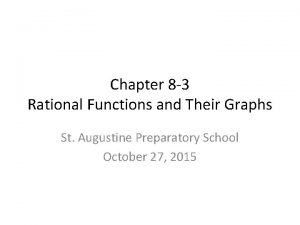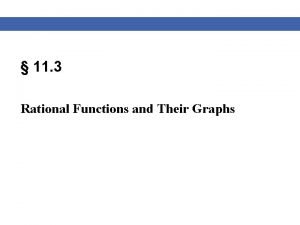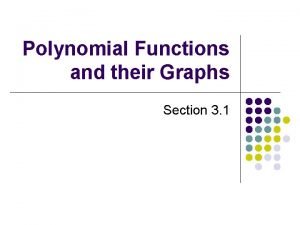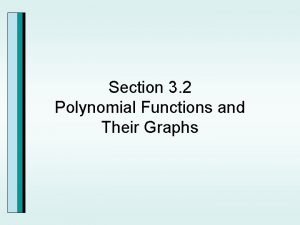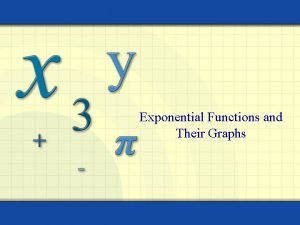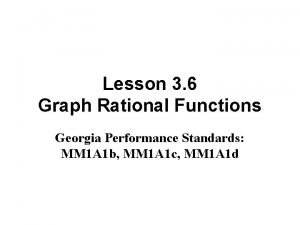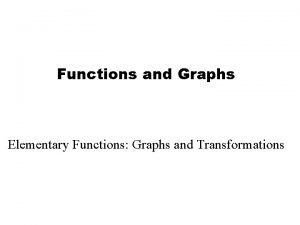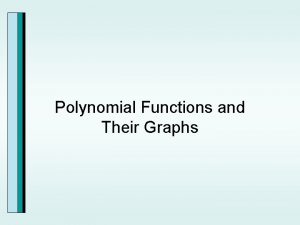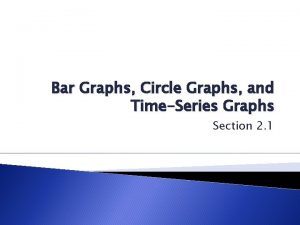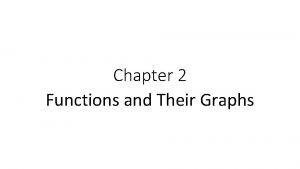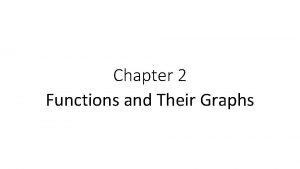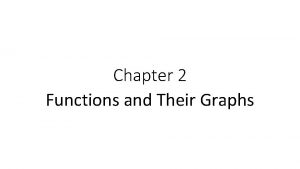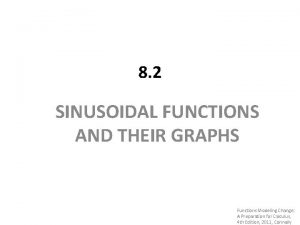Chapter 2 Functions and Their Graphs Section 3














- Slides: 14

Chapter 2 Functions and Their Graphs

Section 3 Properties of Functions

Even and Odd Functions A function is even if, for every number x in its domain, the number –x is also in the domain and f(-x) = f(x) A function is odd if, for every number x in its domain, the number –x is also in the domain and f(-x) = -f(x) Graphs of Even and Odd Functions: Even – if the graph has symmetry with respect to the y-axis Odd – if the graph has symmetry with respect to the origin

Example 1: Determine whether each graph is even, odd or neither.

Example 2: Identify if the function if even, odd or neither. * Start by plugging in –X; if that deosn’t work, make entire function negative a) f(x) = x 2 – 5 b) g(x) = x 3 – 1 c) h(x) = 5 x 3 – x

A function f is increasing on an open interval I if, for any choice of x 1 and x 2 in I, with x 1 < x 2, we have f(x 1) < f(x 2) A function f is decreasing on an open interval I if, for any choice of x 1 and x 2 in I, with x 1 < x 2, we have f(x 1) > f(x 2) A function f is constant on an open interval I if, for all choices of x in I, the values f(x) are equal

Local Maxima and Local Minima A function f has a local maximum at c if there is an open interval I containing c so that, for all x not equal to c in I, f(x) < f(c). We call f(c) a local maximum of f (the graph changes from increasing to decreasing) A function f has a local minimum at c if there is an open interval I containing c so that, for all x not equal to c in I, f(x) > f(c). We call f(c) a local minimum of f (the graph changes from decreasing to increasing)

Example 4: At what value(s) of x does f have a local maximum? What are the maximums? At what value(s) of x does f have a local minimum? What are the minimums?

Using a Calculator to Determine Local Maximums and Minimums Find the local max and min for f(x) = 6 x 3 – 12 x + 5 for -2 < x < 2 (don’t forget to change your window!!) Local max: 2 nd TRACE Maximum Left? , Right? , Guess? Local min: 2 nd TRACE Minimum Left? , Right? , Guess? Where is it increasing and decreasing? ?


Example 6: Find the average rate of change of f(x) = 3 x 2 from: a) 1 to 3 b) 1 to 5 c) 1 to 7

Slope of the Secant Line The average rate of change of a function from a to b equals the slope of the secant line containing two points (a, f(a)) and (b, f(b)) on its graph.

? ? #s 11 -19 odd, 21, 35, 53, 57 (if there is time)

EXIT SLIP
 Chapter 1 functions and their graphs
Chapter 1 functions and their graphs Chapter 2 functions and their graphs answers
Chapter 2 functions and their graphs answers Polynomial end behavior chart
Polynomial end behavior chart Lesson 3: rational functions and their graphs
Lesson 3: rational functions and their graphs Quadratic functions and their graphs
Quadratic functions and their graphs 8-3 rational functions and their graphs
8-3 rational functions and their graphs Sketch the graph of the following rational function
Sketch the graph of the following rational function Common functions and their graphs
Common functions and their graphs What is constant polynomial
What is constant polynomial Polynomial functions and their graphs
Polynomial functions and their graphs Polynomial functions and their graphs
Polynomial functions and their graphs Exponential functions and their graphs
Exponential functions and their graphs Irrational parent function
Irrational parent function Lesson 3 rational functions and their graphs
Lesson 3 rational functions and their graphs Investigating graphs of polynomial functions
Investigating graphs of polynomial functions
